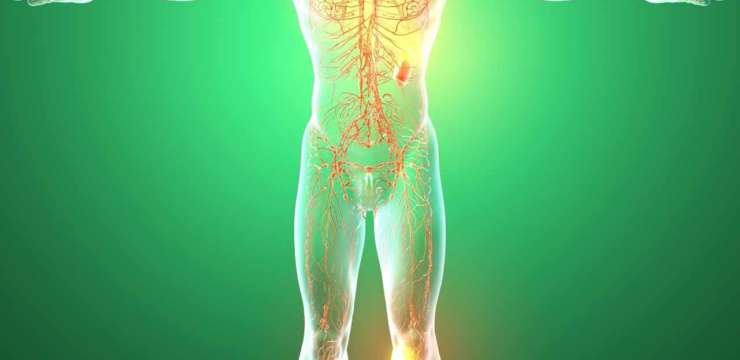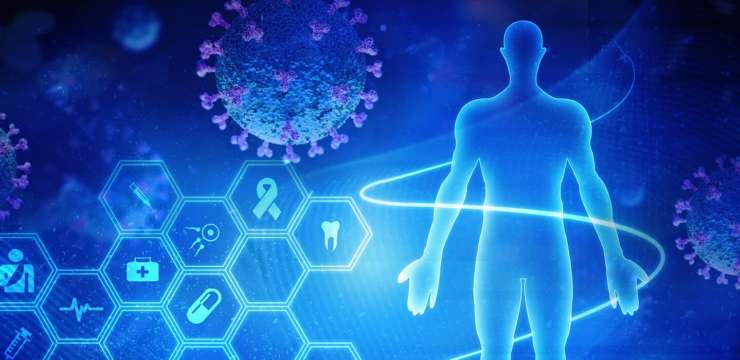Iodine is a substance that can be found in salt and food. Due to contrary belief, iodine deficiency is very much alive, and over 96% of people are deficient. Hypothyroidism is very common, and the highest concentration of iodine is in the thyroid. Simply put, you can not make thyroid hormone without iodine. However, by treating the thyroid with iodine, the cysts also improve. It is essential to acknowledge that thyroid cancer is one of the fastest growing cancers.
Iodine
Iodine has many functions, but one of the most prevalent is to maintain the typical architecture of glandular tissue. These tissues include the thyroid gland, ovaries, uterus, breasts, prostate, and pancreas. Cysts are the first thing to appear on these tissues when iodine deficiency is present. Iodine used to be very present in food; however the National Health and Nutrition Examination Survey that is done by the United States every ten years that measures the vitamin, mineral, and toxicity level has shown that iodine levels declined over 50%. Throughout this time, when iodine levels are low, we have seen an increase in thyroid illness, hypothyroidism, and Hashimotos.
Thyroid
The thyroid gland is located in the neck. It is part of the endocrine system and is a butterfly-shaped gland that is responsible for hormone release. These hormones are associated with metabolism and the way the human body uses energy. The hormone released is Thyroxine (T4) and consists of four atoms of iodine. The other hormone released is triiodothyronine (T3) which contains three atoms of iodine. These hormones become biologically active and influence the cells and tissues throughout the body.
Common problems associated with T3 and T4 include too much or too little production. Too much is referred to as hyperthyroidism. Hyperthyroidism symptoms include weight loss, heat intolerance, anxiety, and sore or gritty eyes. Too little is known as hypothyroidism. Those impacted by hypothyroidism suffer from tiredness, feeling cold, weight gain, poor concentration, and depression. Hypothyroidism is a more common disorder.
Phase Angle
Phase angle is an overall snapshot of cellular health. The higher the phase angle, the more robust an individual’s cellular membrane is, indicating they are able to fight off inflammation and infection better. Those with a poor phase angle tend to have overall poor health and are more susceptible to inflammation, metabolic syndrome, and infections.
Phase angle can be impacted by thyroid disorders if the hormones are not balanced. For example, hypothyroidism causes weight gain, depression, and tiredness. These three combined can lower phase angle. The more weight an individual carries, the more cortisol and fat cells they create. These cells breed inflammation, reducing phase angle. Depression and tiredness make it extremely hard for individuals to exercise and want to live a healthy lifestyle. The reduction of exercise and increase in unhealthy food causes more weight gain, inflammation and can lead to joint pain if left untreated.
We monitor phase angle and inflammation with the InBody 770. This machine uses bioelectric signals to create a report showing an individual’s body composition. The report shows crucial numbers such as intracellular water, extracellular water, percent body fat, lean muscle mass, and more.
[embedyt] www.youtube.com/watch?v=WwbIsPNUYqs%5B/embedyt%5D
THE HUMAN BODY IS AN EXTREMELY DELICATE SYSTEM THAT CAN BE THROWN OFF WITH THE SMALLEST CHANGE. IODINE DEFICIENCIES ARE PREVALENT, AS WELL AS THYROID PROBLEMS. DIETARY CHANGES, EXERCISE, AND POSSIBLE SUPPLEMENTATION (AFTER SPEAKING WITH YOUR HEALTHCARE PROVIDER) COULD HELP INDIVIDUALS WHO SUFFER FROM LOW PHASE ANGLE AND THYROID ISSUES. -KENNA VAUGHN, ACSM-CEP, SENIOR HEALTH COACH
References:Â
Brownstein, David. “Iodine: The Most Misunderstood Nutrient.†Functional Medicine University. 18 May 2021.Â
Triggiani V, Tafaro E, Giagulli VA, Sabbà C, Resta F, Licchelli B, Guastamacchia E. Role of iodine, selenium and other micronutrients in thyroid function and disorders. Endocr Metab Immune Disord Drug Targets. 2009 Sep;9(3):277-94. doi: 10.2174/187153009789044392. Epub 2009 Sep 1. PMID: 19594417
Additional Online Links & Resources (Available 24/7)


Â
Online Appointments or Consultations:  https://bit.ly/Book-Online-Appointment


Â
Online Physical Injury / Accident Intake Form: bit.ly/Fill-Out-Your-Online-History


Â
Online Functional Medicine Assessment: bit.ly/functionmed
Disclaimer
Â
The information herein is not intended to replace a one-on-one relationship with a qualified health care professional, licensed physician, and is not medical advice. We encourage you to make your own health care decisions based on your research and partnership with a qualified health care professional. Our information scope is limited to chiropractic, musculoskeletal, physical medicines, wellness, sensitive health issues, functional medicine articles, topics, and discussions. We provide and present clinical collaboration with specialists from a wide array of disciplines. Each specialist is governed by their professional scope of practice and their jurisdiction of licensure. We use functional health & wellness protocols to treat and support care for the musculoskeletal system’s injuries or disorders. Our videos, posts, topics, subjects, and insights cover clinical matters, issues, and topics that relate and support, directly or indirectly, our clinical scope of practice.* Our office has made a reasonable attempt to provide supportive citations and has identified the relevant research study or studies supporting our posts. We provide copies of supporting research studies available to regulatory boards and the public upon request. We understand that we cover matters that require an additional explanation of how it may assist in a particular care plan or treatment protocol; therefore, to further discuss the subject matter above, please feel free to ask Dr. Alex Jimenez or contact us at 915-850-0900.  Read More…
Dr. Alex Jimenez DC, MSACP, CCST, IFMCP*, CIFM*, CTG*
email: coach@elpasofunctionalmedicine.com
phone: 915-850-0900
Licensed in Texas & New Mexico

















